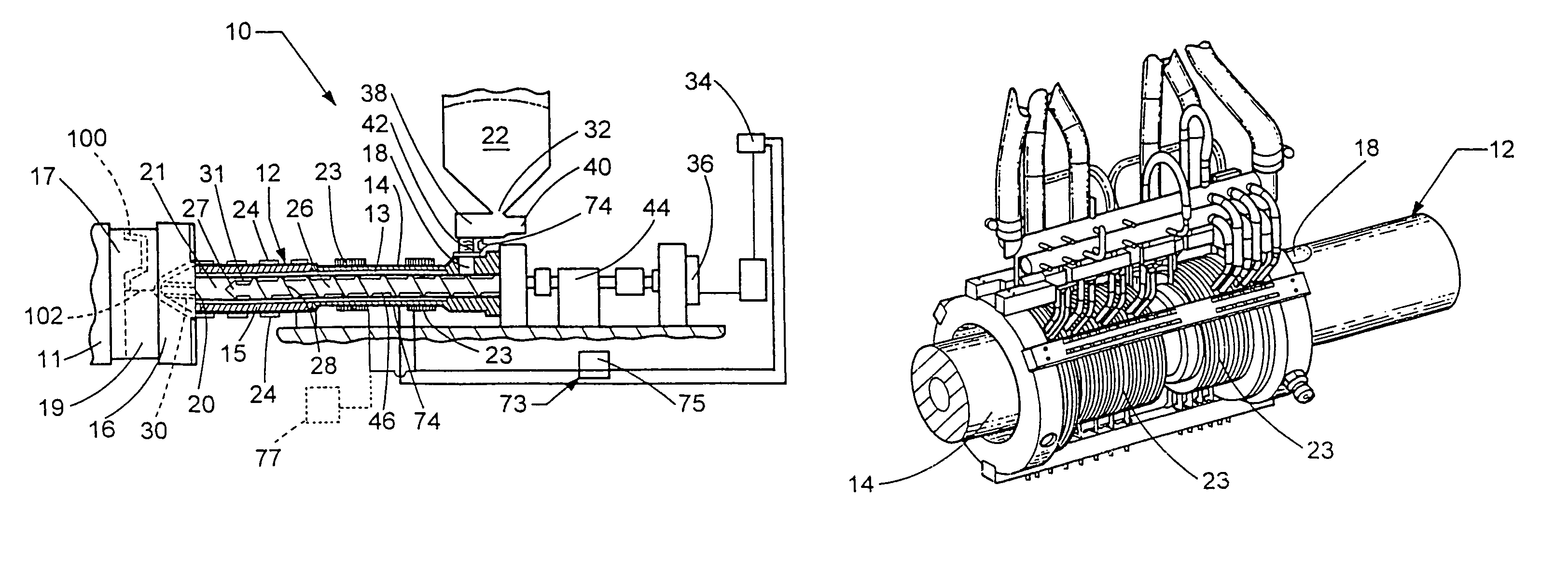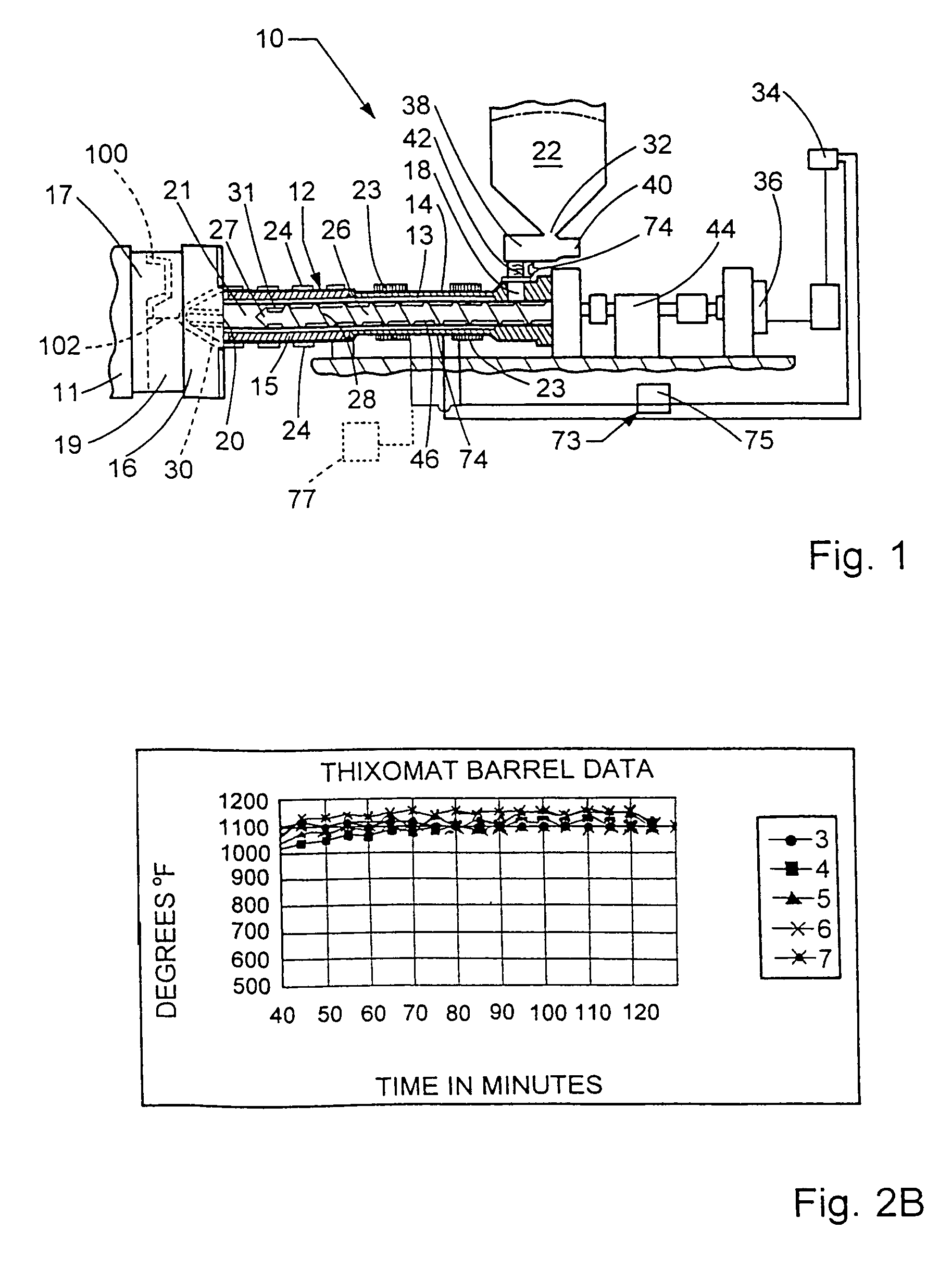Apparatus for molding metals
a technology of metal molding and casting machine, which is applied in the direction of molten metal conveying equipment, chemical apparatus and processes, manufacturing tools, etc., can solve the problems of excessive scrap, high energy consumption, and limited conventional die casting procedures, so as to reduce the temperature gradient, reduce the cycle time, and reduce the thermal gradient through the thickness of the barrel
- Summary
- Abstract
- Description
- Claims
- Application Information
AI Technical Summary
Benefits of technology
Problems solved by technology
Method used
Image
Examples
Embodiment Construction
[0040]Referring now to the drawings, a machine or apparatus for processing a metal material into a thixotropic state or molten state and molding the material to form molded, die cast, or articles for forging according to the present invention is generally illustrated in FIG. 1 and designated at 10. Unlike typical die casting or forging machines, the present invention is adapted to use a solid state feedstock of a metal or metal alloy (hereinafter just “alloy”). This eliminates the use of a melting furnace, in die casting processes, along with the environmental and safety limitations associated therewith. The present invention is illustrated as accepting feedstock in a chipped or pelletized form. These feedstock forms are preferred, but other forms may be used. The apparatus 10 transforms the solid state feedstock into a semisolid, thixotropic slurry or liquid which is then formed into an article of manufacture by either injection molding or die casting.
[0041]The apparatus 10, which ...
PUM
| Property | Measurement | Unit |
|---|---|---|
| frequency | aaaaa | aaaaa |
| temperature | aaaaa | aaaaa |
| temperature | aaaaa | aaaaa |
Abstract
Description
Claims
Application Information
 Login to View More
Login to View More - R&D
- Intellectual Property
- Life Sciences
- Materials
- Tech Scout
- Unparalleled Data Quality
- Higher Quality Content
- 60% Fewer Hallucinations
Browse by: Latest US Patents, China's latest patents, Technical Efficacy Thesaurus, Application Domain, Technology Topic, Popular Technical Reports.
© 2025 PatSnap. All rights reserved.Legal|Privacy policy|Modern Slavery Act Transparency Statement|Sitemap|About US| Contact US: help@patsnap.com



